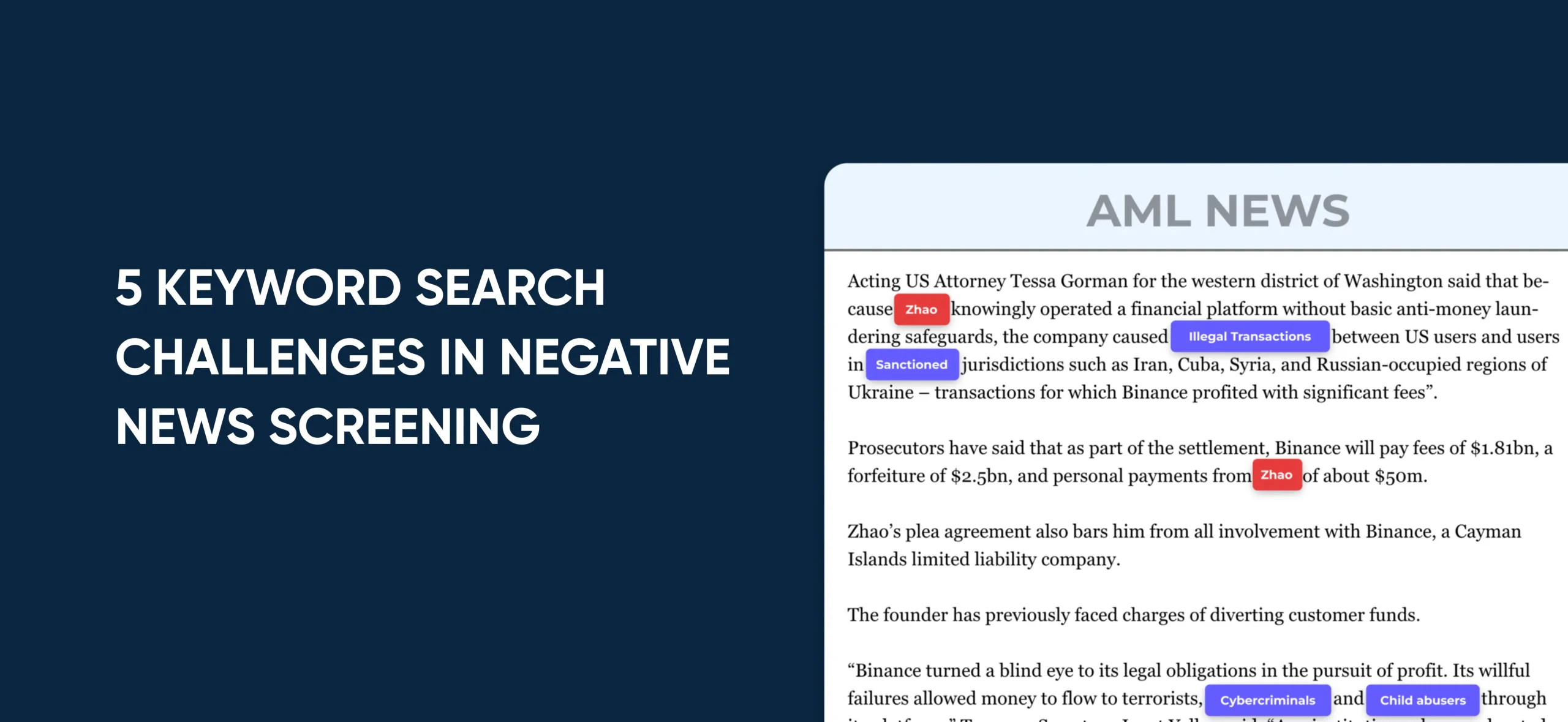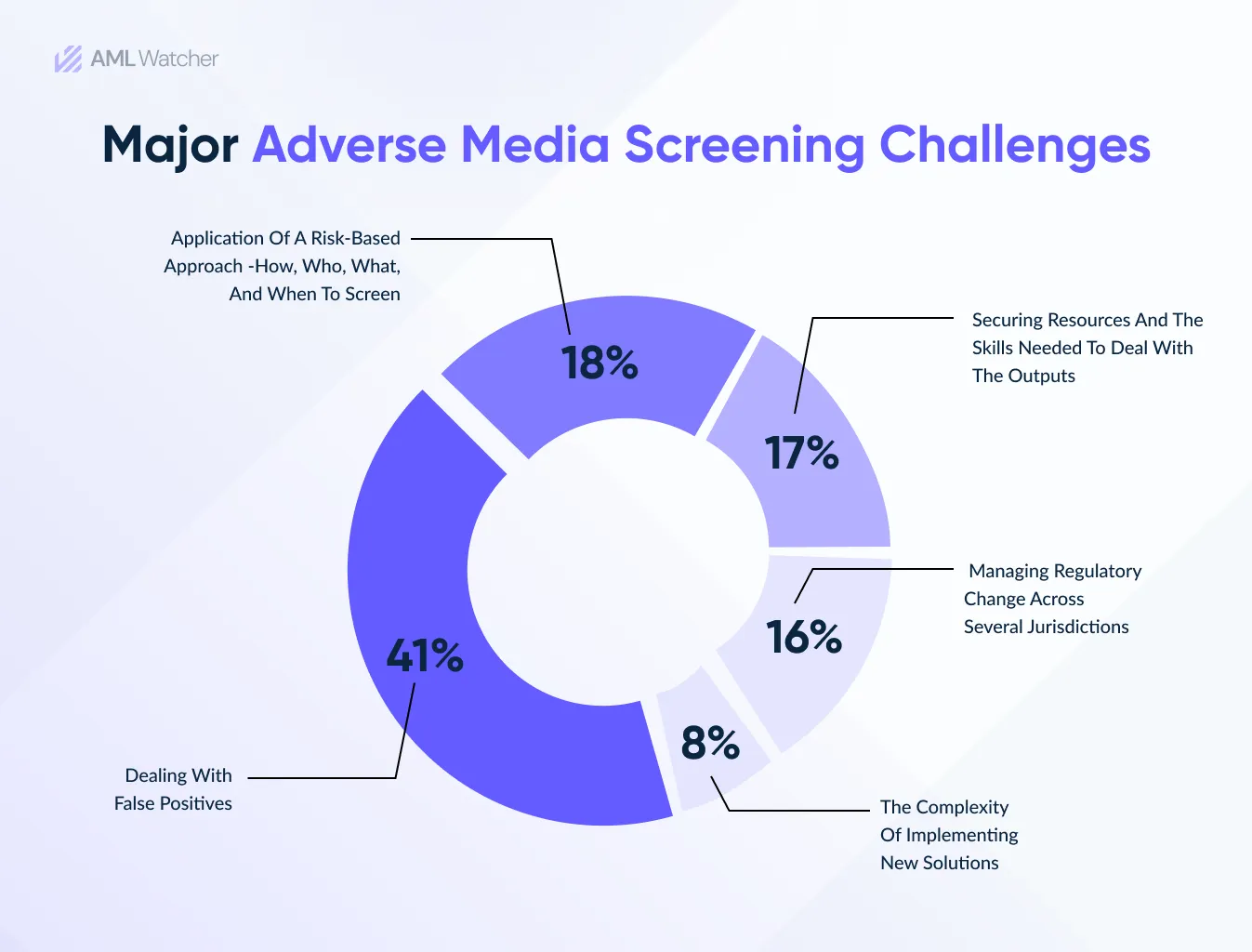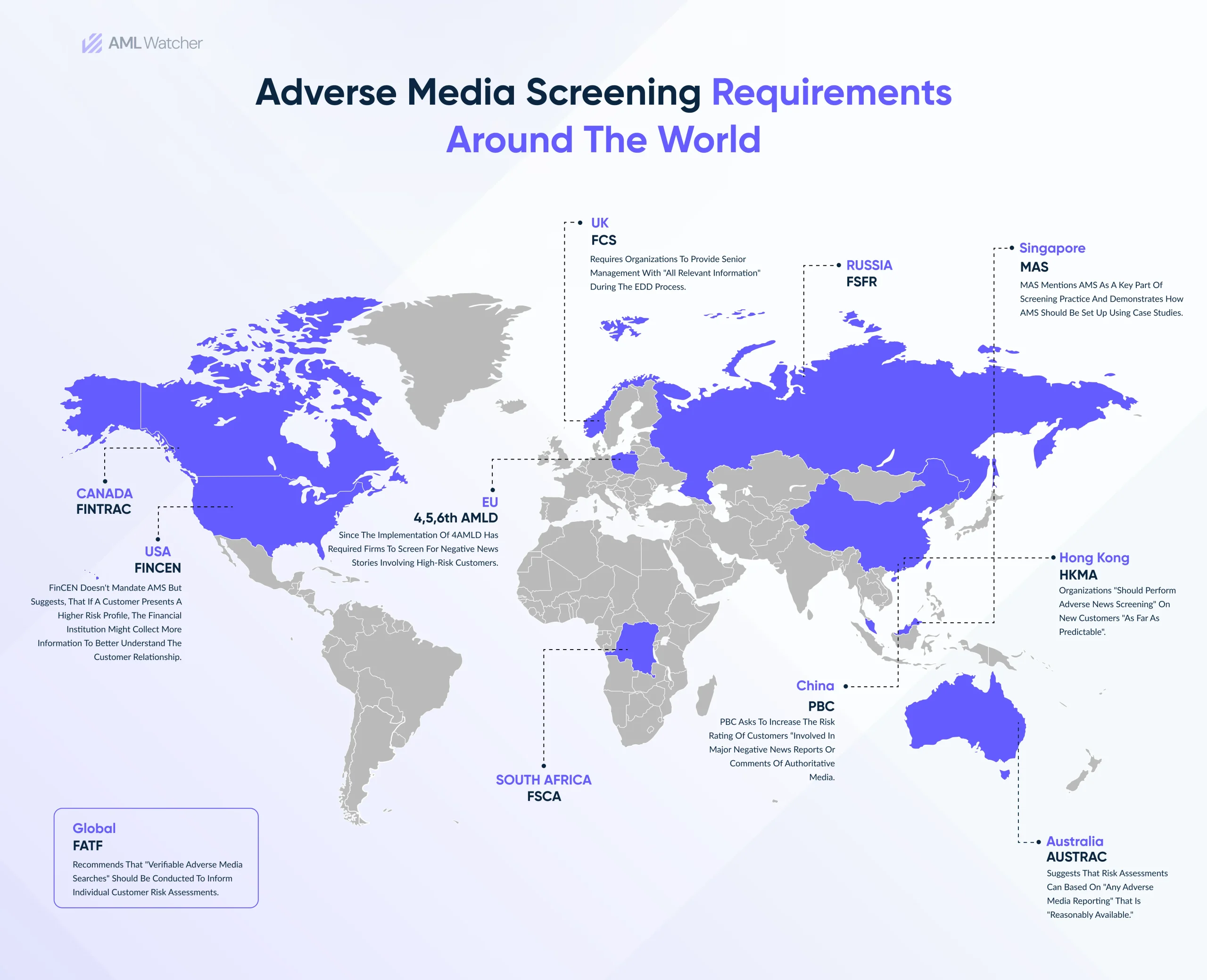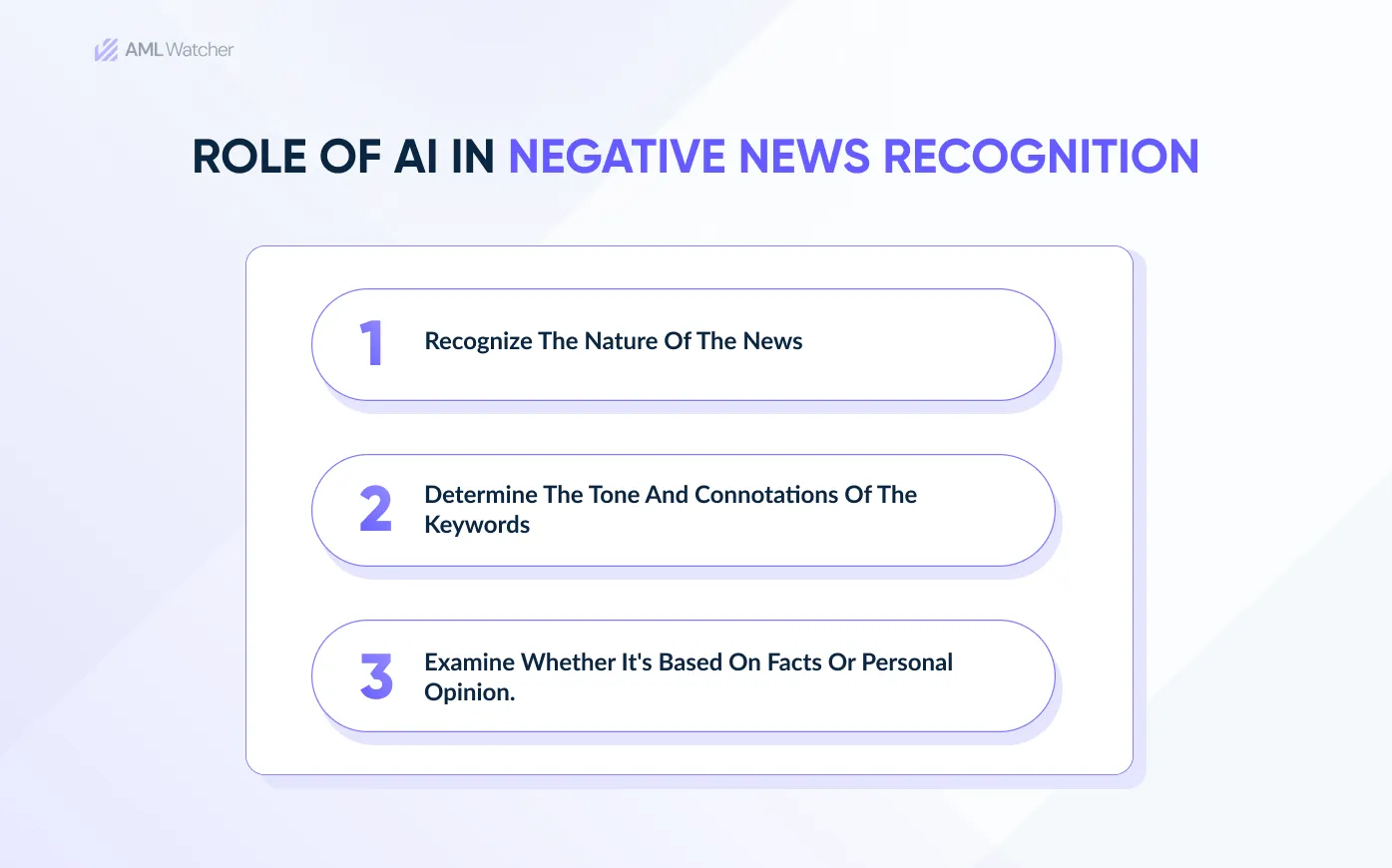
5 Keyword Search Challenges in Negative News Screening
You must have heard an old saying, “No news is good news”. This becomes questionable when we talk about financial due diligence and compliance domain.
Imagine yourself participating in a high-stakes treasure hunt to find hidden clues that can help increase your institution’s revenue and avoid bankruptcy.
But here is the catch: all you can carry is a basic map that is labeled with simple keywords like “fraud,” “scam,” and “money laundering.”
These keywords may appear to be your reliable allies, but they’re more similar to trying to locate treasure using a basic compass which leads nowhere. They are unable to interpret media stories’ subtleties, context, or hidden meanings.
They are unsure if “money laundering” refers to a high-risk situation that exists now or some Negative News coverage with historical background.
Therefore, using simple keywords to navigate this treasure hunt could result in an overload of unnecessary news data or missing important news alerts, so it’s essential to have more advanced Negative news screening tools in your toolbox to follow the right path.
Sounds like you’re confused with navigating through a maze with a limited toolkit, right? Welcome to the adventurous world of AML Adverse news screening, where relying solely on these keywords alone can frequently take you down a dark alley.
Let’s first get a quick idea of what is adverse media and what Adverse media screening means.
What Is the Idea Of Adverse Media?
Adverse media is defined as any negative information or possible bad reputation about the customer, institution, or group found in different sources. The Adverse media check can reveal that an individual, group, or entity was involved in past or currently dealing with money laundering, terror financing, fraud, and all other sorts of unlawful activity.
What Is the Concept Of Adverse Media Screening?
When practicing adverse media screening, the main goal of the process is to find something bad, or negative about a particular person or company.
Adverse Media Screening is used in the context of the KYC and Anti-Money Laundering (AML)/CTF assessment during the client’s screening process from initial onboarding to the ongoing procedure or as an automated screening of a vendor list.
Due to the continual and ever-changing approach to adverse information screening, it is difficult for anyone to analyze outcomes to point out hidden risks more expeditiously and economically.
Automated Negative News Screening services provide a global collection of carefully selected negative media information that is updated and includes regulatory remarks in real-time. Reports about the customer’s finances are also available for viewing by users from the database.
Now, it is time to move forward on the main concern of simple keyword search drawbacks in Adverse media screening to get reliable and accurate results.
Five Challenges in Adverse Media Screening
The problem is that in the sphere of negative news screening AML—Anti-Money Laundering, the usage of the refined approach such as the keyword search for negative news checks has some essential drawbacks. Most of the time, it’s seen in the inaccurate distinctions between false positives and false negatives.
How these issues affect the accuracy and effectiveness of outcomes presented by adverse media screening are;
-
Higher False Positives Due to Lack of Context
“Imagine you’re catching every risk with only a simple search. Now Think again!”
Basic keyword searches frequently highlight any occurrence of certain terms, including “fraud,” “money laundering,” embezzlement or “offshore accounts,” without taking into account the context of these terms.
This leads to a significant number of false positives, or alerts set off by mentions that are either innocuous or irrelevant.
This creates a high volume of irrelevant alerts and overburdened compliance teams while limiting their ability to focus on genuine AML risks effectively.
Let’s say a compliance system searches for “Sarah Johnson” using basic keywords from different Negative News sources. Without taking context into account, a search for “Sarah Johnson” alone may return articles on a different “Sarah Johnson,” such as a fictional character in a novel or a local artist, rather than a financial criminal.
-
Missed Threats Due to Limited Pattern Recognition
Keyword searches are limited to the exact words or phrases that their algorithms are trained to identify; synonyms, variants, and terms that are contextually relevant are frequently excluded.
This restriction makes it more likely that serious threats may go unnoticed due to a higher number of false negatives, which occur when search phrases fail to find all potential references to financial crimes.
For instance, When someone searches for a phrase like “David Lee,” and the system does not identify variations like “Dave Lee” or “D. Lee,” it may overlook important details about a criminal with the same name who goes by multiple aliases.
-
Inability to Detect Nuanced Information
“Keywords are stuck in the past while financial criminals evolve—don’t let your defenses lag!
Consider an untrained investigator who is unable to see past the obvious—keyword searches are sometimes just as ignorant of the subtleties of a narrative!
Keywords cannot differentiate between the complexity of an integrating plot like the level of participation within criminal incidences or the gravity of accusations.
Keywords are unable to process complex information, which results in overestimated or underestimated risk evaluations.
For instance, the system may mislead you if it mentions “money laundering” in a broad news story and you don’t know if it’s a tiny reference or a significant accusation. You run the risk of either overreacting to insignificant remarks or completely missing important warnings.
One of the most prestigious banks in the world, HSBC Holdings, carelessly authorized the illegal activities of Mexican drug cartels without checking the identity of the account holders and was fined $1.9 billion.
If their risk management approach had included effective negative media checks, these financial and reputational consequences might have been prevented.
-
Barriers Across Different Languages & Sources
“Imagine a detective who is productive only in one area and incompetent to solve crime in another – keyword searches can be just as complicated in numerous sources and different languages!”
Keyword searches can be problematic regarding consistency, more so across varying Negative media coverage and various languages. This can lead to gaps in coverage and variable results.
For example, a search may do a good job on English language reports in the local or popular media but poorly for foreign or specialized papers and lose important feeds from overseas publications.
This inconsistency implies that you are likely to be presented with an ambiguous perception of prospective risks, which compromises your AML screening mechanism more.
This variation could therefore weaken the overall detection capability and make it vulnerable to giving out false alerts of an attack as well as failing to detect an attack when one is forthcoming.
-
Overloading Volumes: The Data Crash
“Have you ever found yourself under a mountain of paperwork? That’s what keyword searches can do—bombarded with alerts making it difficult to identify the actual threats.”
The use of simple keywords can lead to the creation of huge lists of results, much of it is are either noise or inactionable. This is because there is always a large number of contents that are flagged and hence make the negative media screening and filtering take a long time.
It may be difficult for compliance officers to sort through a large number of warnings, many of which are false positives, which makes it harder for them to concentrate on real threats. This overabundance can impede the entire process and postpone vital steps that are required to neutralize actual threats.
So, the shortcomings of simple keyword searches in Adverse news screening—such as false positives, missed risks, and massive amounts of irrelevant data—highlight the urgent need for a more advanced approach and reliable AML solutions.
As compliance officers struggle with these inefficiencies, the call for Negative news screening tools that offer precision, accuracy, and efficiency becomes undeniable.
Here Enters AML Watcher: an advanced screening solution with more than 5000 global media sources; designed for anti-money laundering practices and compliance professionals facing these challenges.
AML Watcher’s Adverse Media Screening Works Beyond Basic Keyword Search
In the complex world of financial crime detection, striking the right balance between identifying true risks and avoiding unnecessary alerts is crucial. AML Watcher’s innovative Adverse news screening technology excels in this area by minimizing false positives and negatives, allowing financial institutions to work on definite threats and hidden risks while streamlining their compliance processes.
Compliance Officers! Find out how AML Watcher makes it possible:
-
Sentiment Analysis: The Insightful Detective
“Imagine having an agent who not only decodes the clues but also understands their significance—AML Watcher’s sentiment analysis does just that!”
By integrating innovative sentiment analysis AML Watcher aims to determine the seriousness of any news or Negative media coverage. This technology distinguishes between mere mentions and actual negative sentiments linked to any “name” connected with financial crime.
As it analyzes the sentiment of texts in the articles and reports more accurately, AML Watcher doesn’t produce many false positives, meaning that only information that should be alarming indeed triggers notifications.
For instance, a man has been mentioned in an article briefly and there is no suspicion of crime; no alerts will be generated when searching for this man, but severe/serious or relevant mentions will trigger alerts.
-
Natural Language Processing (NLP): The Contextual Expert
“Consider NLP as a language specialist that interprets every nuance; AML Watcher’s NLP features guarantee that no information is lost in translation!”
AML Watcher integrates advanced NLP algorithms to identify the context and the needed sentiment of the language used in the adverse media sources. NLP can understand differences in terms, setting, and even grammar, unlike the other keyword-based systems.
This advanced understanding reduces false positives and negatives by recognizing risk indications that are subtle enough to be missed by keyword searches.
NLP, for example, may link different references to comparable financial operations in different reports and languages, guaranteeing a detailed risk assessment that detects all relevant concerns without flooding compliance teams with irrelevant data.
This means that if a report mentions “suspicious financial activity” rather than “money laundering,” NLP will still detect it as accurate— reducing false negatives and capturing a broader range of potential risks.
-
Real-Time Data Processing: The Speedy Investigator
AML Watcher operates on the principles of real-time Monitoring data processing to continuously scan and analyze global media sources. This makes sure that the latest data is used in the negative media screening process so that ideal and appropriate results are obtained.
Immediate access to up-to-date information minimizes the number of both false positives and false negatives by giving a timely and current status of possible threats arising from negative news.
-
Customizable Risk Parameters: The Tailored Approach
For Negative News Screening, the customizable risk parameters prove helpful. Compliance teams can use this feature to customize their search parameters so that they concentrate on unfavorable news stories that fit their organization’s risk profile.
Organizations can, for instance, establish criteria to filter out irrelevant news and give priority to stories about financial misconduct or regulatory violations. This customization guarantees a more accurate screening procedure, hence lowering irrelevant warnings and effectively emphasizing major risks.
AML Watcher helps businesses increase the accuracy of their threat detection and expedite their response to possible threats by modifying the risk parameters to concentrate on relevant negative news.
-
Expert Review and Validation: The Final Check
“Think of having a team of experts double-checking every news finding—AML Watcher combines AI with human expertise to score each news with its severity for unmatched accuracy!”
AML Watcher combines AI-driven insights with human expertise to validate and contextualize flagged information. Our proprietary database detects and flags any information then our in-house team further verifies, interprets, and creates risk scoring to ensure accuracy.
The expert network works as the final filter in most cases preventing false positives as well as false negatives. It differentiates between actionable threats and noise hence filtering out the stuff that the compliance teams do not need to know.
To sum up, in a variety of sectors, Negative News screening is an essential part of a strong anti-money laundering (AML) strategy. Through the integration of powerful analytical tools and customizable risk metrics, organizations can enhance their ability to detect and address potential risks posed by negative media.
Keeping up with cutting-edge screening technologies is crucial to preserving a safe and legal operating environment as financial crime strategies get more complex.
AML Watcher with its deep insights on Negative News Screening solutions offers tailored screening that goes beyond simple keyword searches. Accurate and prompt detection of unfavorable news benefits financial institutions and IT companies alike by reducing risks, improving regulatory AML compliance, and safeguarding reputations.
The main differentiating factor of AML Watcher in the adverse information screening is the elimination of the additional noise by primary methods such as cutting down false-positive and false-negative results, that are obtained by; sentiment analysis, advanced NLP, real-time processing of big data, fine-tunable risk profiling, and human-line analysis.
This holistic and balanced approach of methodologies guarantees that financial institutions can get the exact solution which in turn empowers the financial institutions to detect financial crimes, prevent them, and at the same time avoid unnecessary disturbances.
AML Watcher, with 50,000+ data sources and impressive sentiment analysis can revolutionize your adverse media search for quick detection.
Contact Us to discuss more about your compliance needs.
Book Free DemoWe are here to consult you
Switch to AML Watcher today and reduce your current AML cost by 50% - no questions asked.
- Find right product and pricing for your business
- Get your current solution provider audit & minimise your changeover risk
- Gain expert insights with quick response time to your queries






